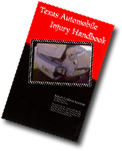How To Avoid Rear-End Collisions
According to the National Highway Transportation Safety Administration, rear end collisions are the third most frequent accident on U.S. roads. A car is rear-ended every 8 seconds, and such collisions comprise nearly a third of all motor vehicle accidents every year. While damage may seem minor, repairing bumpers is actually very costly. Rear end accidents cost Americans $164 billion every year, and typically require a deductible to be paid before repairs can be made.
Insurers suggest that you can best avoid being hit from behind by paying attention to what’s going on around you. Make sure your rear and side mirrors are adjusted correctly so that you can avoid being a target. Flashing your brake lights is also helpful. Other drivers will see that you are slowing down and act accordingly. Your chances of having an accident increase when you suddenly stop. Also, keeping your brake lights free of debris, such as dried mud or snow, will help other drivers know when you are stopping.
Drivers who tailgate frequently cause accidents. You should stay away from them. If a driver insists on following too closely, safely change lanes and let the other driver pass. Staying out of blind spots is also helpful. If a vehicle swerves into your lane, a sudden stop exposes you to the possibility of a collision.
To avoid rear-ending other cars, pay attention to things that could make drivers in front of you stop. Whatever problem is up ahead will be your issue very quickly. Also, avoid following other vehicles too closely, even in free flowing traffic. The faster you are going, the shorter the distance you will have to stop.
In icy or wet conditions, be wary of your ability to swerve to the right to avoid an accident. You may not be able to stop at all on an icy road, but sliding into another lane could help you avoid a rear-collision. Never swerve to the left unless there is a retaining wall, empty lane, or ditch to help you avoid oncoming traffic. A head-on collision could be fatal.
With all the elements involved in a rear-end collision, fault is not always determined easily. Therefore it is important to speak with an experienced attorney before admitting to anything or accepting a settlement offer.



